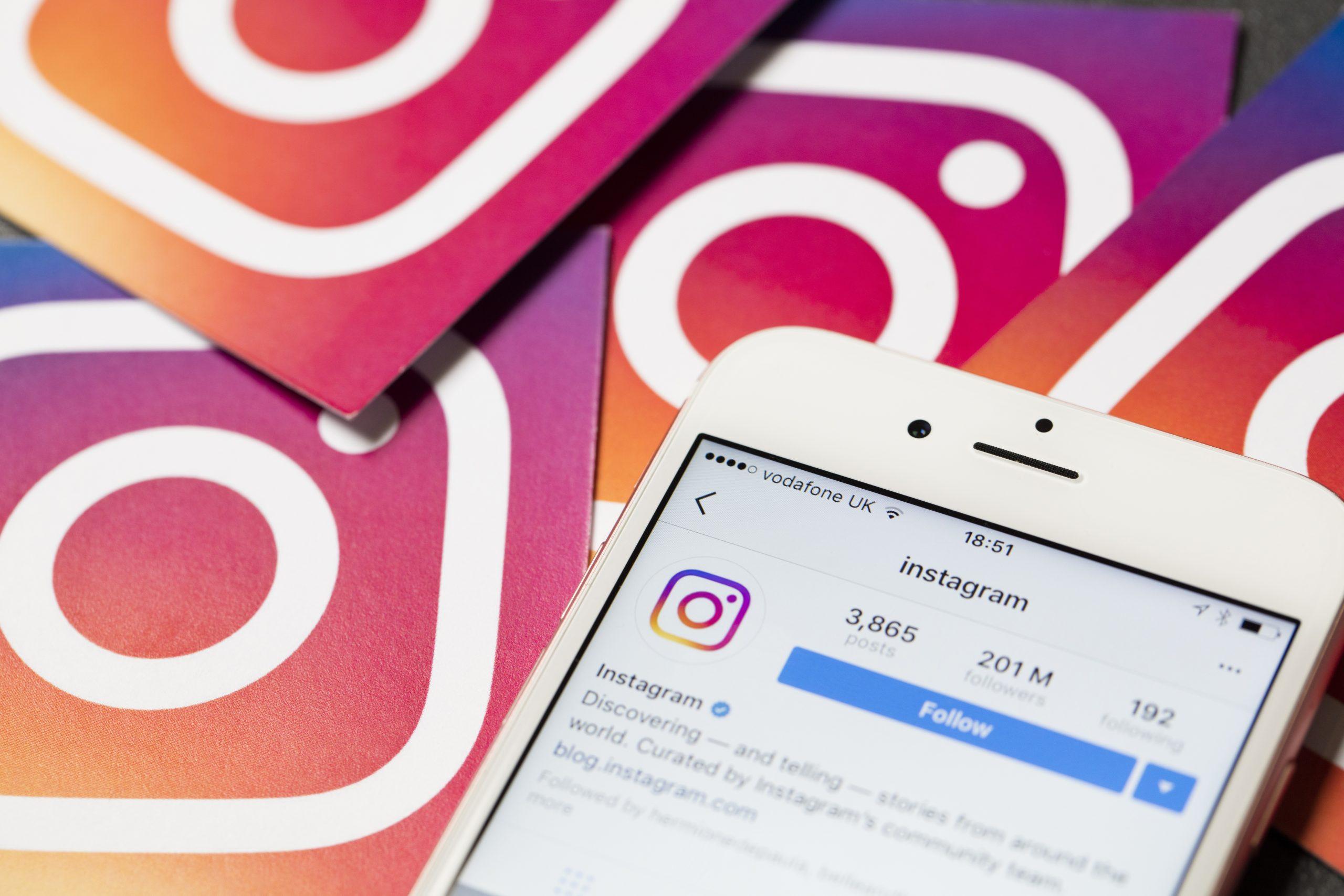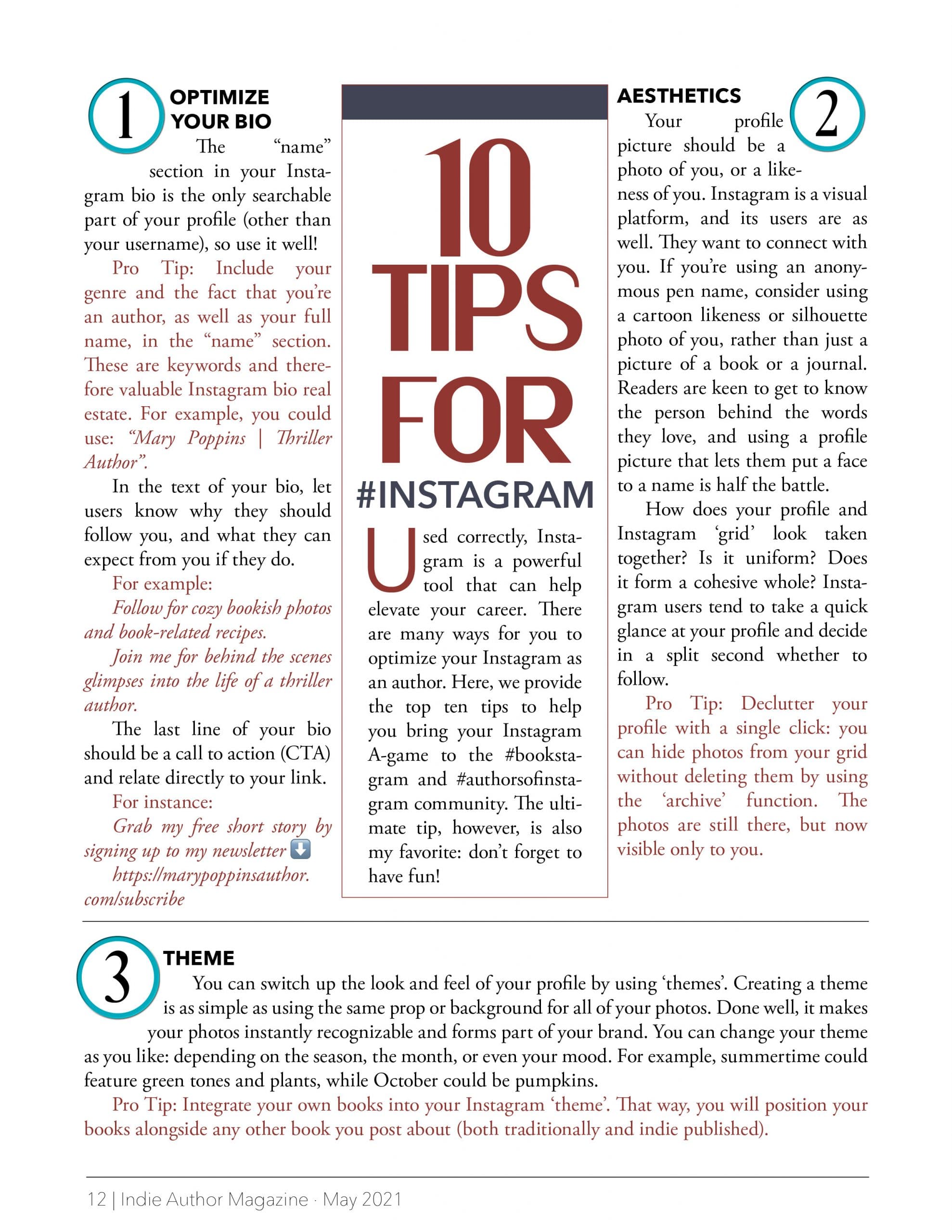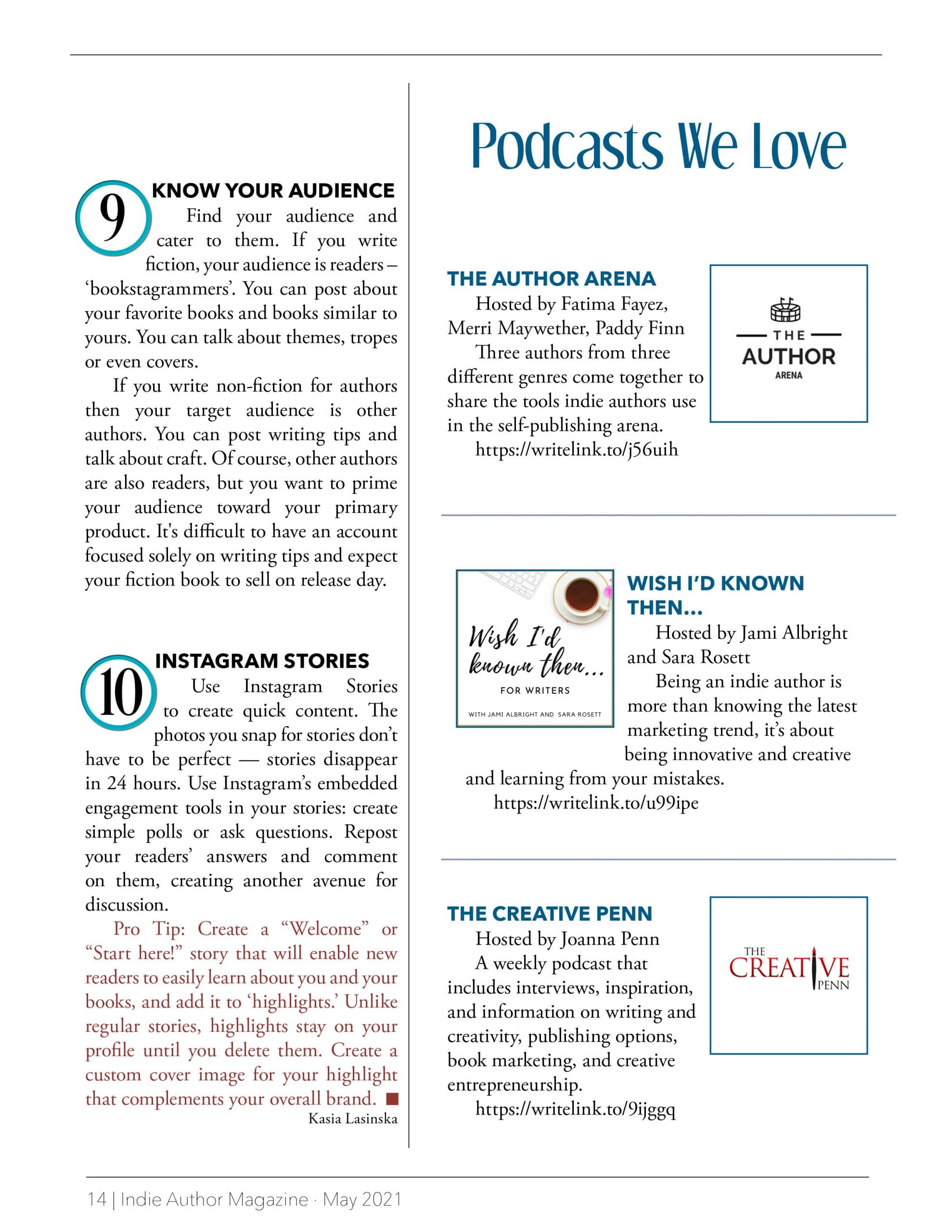Used correctly, Instagram is a powerful tool that can help elevate your career. There are many ways for you to optimise your Instagram as an author. Here, we provide the top ten tips to help you bring your Instagram A-game to the #bookstagram and #authorsofinstagram community. The ultimate tip, however, is also my favorite: don’t forget to have fun!
Optimize your Bio
The “name” section in your Instagram bio is the only searchable part of your profile (other than your username), so use it well!
Pro Tip: Include your genre and the fact that you’re an author, as well as your full name, in the “name” section. These are keywords and therefore valuable Instagram bio real estate. For example, you could use: “Mary Poppins | Thriller Author”.
In the text of your bio, let users know why they should follow you, and what they can expect from you if they do.
For example:
Follow for cozy bookish photos and book-related recipes.
Join me for behind the scenes glimpses into the life of a thriller author.
The last line of your bio should be a call to action (CTA) and relate directly to your link. For instance:
Grab my free short story by signing up to my newsletter ⬇️
Aesthetics
Your profile picture should be a photo of you, or a likeness of you. Instagram is a visual platform, and its users are as well. They want to connect with you. If you’re using an anonymous pen name, consider using a cartoon likeness or silhouette photo of you, rather than just a picture of a book or a journal. Readers are keen to get to know the person behind the words they love, and using a profile picture that lets them put a face to a name is half the battle.
How does your profile and Instagram ‘grid’ look taken together? Is it uniform? Does it form a cohesive whole? Instagram users tend to take a quick glance at your profile and decide in a split second whether to follow.
Pro Tip: Declutter your profile with a single click: you can hide photos from your grid without deleting them by using the archive function. The photos are still there, but now visible only to you.
Theme
You can switch up the look and feel of your profile by using ‘themes’. Creating a theme is as simple as using the same prop or background for all of your photos. Done well, it makes your photos instantly recognizable and forms part of your brand. You can change your theme as you like: depending on the season, the month or even your mood. For example, summertime could feature green tones and plants, while October could be pumpkins.
Pro Tip: Integrate your own books into your Instagram ‘theme’. That way, you will position your books alongside any other book you post about (both traditionally and indie published).
Captions
The Instagram algorithm loves to see engagement. If you can show that users want to engage with your content, it sends a message that the content is valuable and will potentially be shown more.
The simplest way to drive engagement is through asking questions in captions. Bookish questions perform especially well on bookstagram, where many users use the initials ‘QOTD’ (Question of the Day). For example: “Who is your favorite character of all time and why?” Don’t forget to answer your own question. Readers will be naturally curious, and your answer could spark further discussion in the comments.
Your QOTD does not have to relate to your photo, but it helps when it does. You can also use the caption as a space to update readers on what’s going on in your life, or what you’re currently working on.
Hashtags
Research is an important part of any successful marketing strategy, and Instagram is no different. To make sure that your posts are seen by the largest pool of readers, use both niche hashtags (such as #booksandcoffeeplease) and broader hashtags (#books, #bookstagrammer).
Pro Tip: Create your own hashtag using your author name. Readers tend to hashtag author names. If the hashtag exists, they are likely to use it when talking about your books in their own posts.
Another tip is to max out your hashtags. Instagram allows you to use up to thirty hashtags – use them all. The more you use, the greater the chance that someone browsing through the hashtag will find your account.
Pro Tip: You can follow your favorite hashtags. They’ll appear on your ‘following’ page just like normal user accounts.
Hard Copies Work Best
Using paperbacks or hardbacks results in the most aesthetically pleasing photos. While many bookstagram users read traditionally published books, it doesn’t mean they don’t read indie. Invest in author copies and take pictures of them, as well as other books in your genre.
Genuine Engagement is King
Do not follow accounts and then unfollow them once they follow you back — it creates bad rapport. Follow the accounts you genuinely have an interest in and engage with them. Like their photos, answer their QOTD, and write comments. Bookstagram is a lovely community, but you have to be willing to fully participate and give back.
Pro Tip: Giveaways can increase your following and engagement. They can also foster a sense of community and bring you closer to your readers. The giveaway doesn’t need to be your own book, but ensure it is genre appropriate. The key is moderation — you want to attract quality followers who will stay for you and your content, not freebie seekers.
Do Not Self-Promo and Run
Accounts where every photo is a promo graphic created on BookBrush or Canva won’t get traction. Instagram users, like all readers, want value, and not spammy graphics. Incorporate posts about your books among posts about other similar books or your writing process.
Pro Tip: Instead of using traditional promo graphics, consider taking photos of your book or your Kindle. You can still inform readers where your book is available in the caption.
Know Your Audience
Find your audience and cater to them. If you write fiction, your audience is readers – ‘bookstagrammers’. You can post about your favorite books and books similar to yours. You can talk about themes, tropes or even covers.
If you write non-fiction for authors then your target audience is other authors. You can post writing tips and talk about craft. Of course, other authors are also readers, but you want to prime your audience toward your primary product. It’s difficult to have an account focused solely on writing tips and expect your fiction book to sell on release day.
Instagram Stories
Use Instagram Stories to create quick content. The photos you snap for stories don’t have to be perfect — stories disappear in 24 hours. Use Instagram’s embedded engagement tools in your stories: create simple polls or ask questions. Repost your readers’ answers and comment on them, creating another avenue for discussion.
Pro Tip: Create a “Welcome” or “Start here!” story that will enable new readers to easily learn about you and your books, and add it to ‘highlights.’ Unlike regular stories, highlights stay on your profile until you delete them. Create a custom cover image for your highlight that complements your overall brand.








